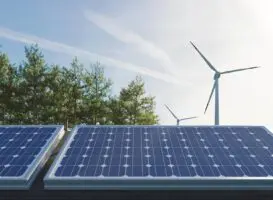HRL’s proposed brown coal-gas hybrid plant in the La Trobe Valley in Victoria was last year limited in size to 300 megawatts by a Victorian Environmental Protection Agency decision. A challenge to this ruling was upheld by the Victorian Civil and Administrative Tribunal (VCAT) in late March which would allow HRL to build a 600 megawatt (MW) plant on the basis that it was ‘best-practice’.
HRL last month announced that it had frozen design and pre-construction work because the decision to allow the size increase was linked to the Federal government’s ‘contract for closure’ approach which is part of their Clean Energy Future Policy. The ‘contract for closure’ approach commits the government to closing the most emissions-intensive plants worth some 2000 MWs by 2020.
The linking of the VCAT decision to this federal government policy has created too much uncertainty for the plant to go ahead for now. Private funding for the plant is conditional on government grants – a promised $100 million from the Federal government and $50 million from the Victorian State government – and these grants now require the completion of negotiations to close or reduce the scale of higher emitting coal-fired power plants such as Hazelwood, which is also in the La Trobe valley.

Despite the HRL announcement, the plant could still go head in the future and this is only one example of plans and negotiations to build new coal-fired and other fossil-fuel based power stations. There are many other proposals and commitments in Australia. Around the world, the International Energy Agency estimates that the equivalent of some 1100 new 1000 megawatt coal-fired power stations will be built by 2035 with 86% of these in China, India and the US, a capacity increase of 73% in China and a doubling of installed capacity in India.
What is interesting, then, is the continuing government support for the existing techno-institutional complex of electricity provision. This support is both the result of, and further entrenches, carbon lock-in.
Carbon lock-in refers to the systemic bias against carbon-saving technologies despite their obvious economic and environmental advantages. It results because of inertia at the corporate, government and system-wide levels and these inertia are themselves the result of the historical development of the technological system at hand.
The current system of centralised and large-scale electricity provision is an historical artefact linked to Samuel Insull in the US. Insull, a one time employee of Thomas Edison, vice president of General Electric and eventual controller of his own multi-billion dollar empire created in the early 1900s a centralised network to reap the benefits of economies of scale and monopoly profits from a new coal-fired technology.
Once this design for electricity provision had won out, it became very difficult to change because an entire technological, institutional, governance, and even social system had built up around it.
For example, the techno-institutional complex of electricity provision involves the power producers, the coal-mining industry, their lobbying and financial backing of governments, the relevant labour unions and the industries inventing the gadgets which utilise electricity. It also includes the social institutions surrounding these gadgets such as labour-saving devices in the home and those used for leisure.
The current method of providing electricity is not necessarily, or even probably, the best way for electricity to be provided. This becomes more obvious when environmental externalities are considered. The reason for the continued dominance of the current method is simply the result of carbon lock-in.
As part of the techno-institutional complex, governments continue to support this lock-in through the structure of subsidies, grants and political support for the relevant industries. This may not favour any individual firm but certainly favours the existing techno-institutional system. We can witness this in the current case through the promise of $150 million in government grants.
Even when new plants are built under the ‘contract for closure’ proviso of reducing existing, older plants – for example, in the HRL case – carbon lock-in becomes further entrenched. In particular, the building of new plants extends the life of the existing techno-institutional complex.
In a 2010 Science article, Davis, et al. estimated the cumulative future emissions and global warming from existing transportation and energy infrastructure such as coal-fired power plants. Encouragingly, if we ceased building CO2-emitting devices such as power plants and motor vehicles but allowed all existing devices to live out their normal lifetimes, the resulting CO2 atmospheric concentration would be within the IPCC’s acceptable range. In contrast, continuing to expand the fossil-fuel based infrastructure will lead to atmospheric concentrations well outside the IPCCs acceptable range. This leads the authors to conclude that “sources of the most threatening emissions have yet to be built”.
As a developed economy, we have a duty to set the agenda to a more sustainable future and stop building fossil-fuel based power stations. Even when these replace more emissions-intensive, older plants, they continue to support the existing path dependencies and continue to lock us out of a renewable future.
Neil Perry is a Research Lecturer at University of Western Sydney
This article was originally published on The Conversation – theconversation.edu.au. Reproduced with permission.










